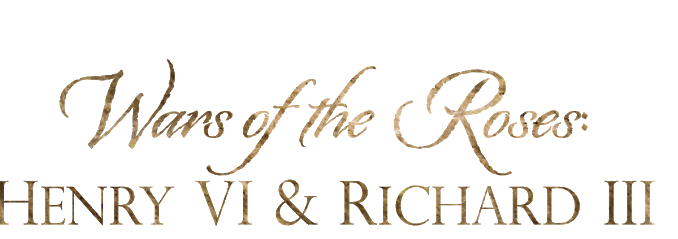

To direct a Shakespearean theatre presentation that will compel an audience in 2018 is a task only an experienced playwright like Austin Pendleton could accomplish. “Wars of the Roses: Henry VI & Richard III,†co-directed by Peter Bloch, combines texts from “Henry VI part 3†and “Richard III†respectively to create a piece undemanding of new viewers, but nods to those experienced with William Shakespeare’s (Romeo & Juliet) material. With performances, which includes Pendleton himself, the confidence of the cast in what little props they were given is what keeps this hundred year throwback afloat.
Whether or not you keep up with Shakespearean lore, the root of this retelling is based on Richard III’s inhibited rage due to his deformity as an executioner with a hump and disproportionate limbs.
Matt de Rogatis’ colorfully animated portrayal of the deranged crown-hungry villain steals the show with his dynamic physical and vocal performance. His exaggerated posture and explosive energy enable other actors to match his presence. Though at times, he may speed through complicated metaphors, which is a consistent issue throughout the play and many before it, he makes up for it with appropriate emphasis in dialect. Every “thy†and “slay†is well enunciated by each actor but de Rogatis leads by example. The support system within the cast is clearly held together by Pendleton’s signature emphasis on actor-freedom. As a result, there is a legitimate connection between characters which makes for a stronger overall performance. There are support characters worth exclusive praise, more specifically Jim Broadus as York. Though brief, his delivery and physical subtleties ooze with actor experience and will instantly win earn your attention.
The style of presentation depends on the performance to immerse. With minimal costume work and use of metal chairs, you’re forced to interpret the scene with your imagination. This style of theater isn’t inherently bad, but if you choose a style it’s best to stick with it. Death is represented by actors walking off to the left-hand side of the audience, but it’s also the exit and entrance to alive characters in certain scenes. The placement of characters on stage felt sloppy, particularly during moments where a character is being cornered. This distinction between reality and imagination could have possibly been cleared up through further in-depth on-stage direction and choreography. Support characters, particularly Debra Lass who portrays Queen Margaret, are able to freely use the space provided for robust and expansive movements to signify their deep emotional anguish, so the lack of non-sentient on-stage presence could be due to the stages naturally small structure.
That said, this is a small off-broadway theater experience with the ambition and heart of a feature film studio. Pendleton combines two texts to one seemingly plausible story Shakespeare himself could have passed. As it stands now, it’s a play your wife drags you to only to be pleasantly surprised by the energy that beams from the stage. Though the production clearly lacks resources, it’s a pleasantly simple atmosphere in the waves of the great ocean that is modern entertainment.

Leave a Reply